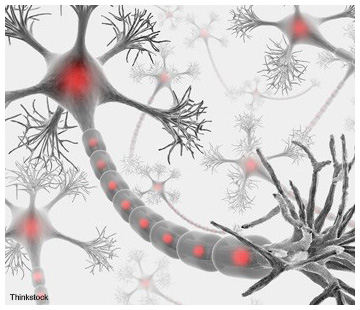
[Image: Thinkstock]
On Tuesday morning, 7 May, OSA Fellow Chris Xu of Cornell University, N.Y., USA, kicked off a series of three plenary talks at the 2019 CLEO Conference with an update on his lab’s work in multiphoton imaging—and how those techniques are opening up new prospects of biological study, particularly of the deep, active brain.
Tofu and cheese
The desire to image neural processes at greater depth and speed is, according to Xu, a “no-brainer—everyone wants deeper, wider and faster” in brain imaging. What’s limiting that quest is, of course, the tendency of biological tissues, such as brain tissue, to scatter light. “It’s like imaging through a piece of tofu or a piece of cheese,” Xu said.
And scattering, Xu notes, isn’t the only problem for fluorescence-driven imaging techniques; there’s also the possibility of other kinds of noise. Even 2-photon microscopy, a watershed in imaging technology, can’t go extremely deep in tissue, because the further it goes, the greater the chance that an intervening particle or structure that’s not the item of interest will be fluorescently excited, boosting the noise and limiting the signal from the target.
“It’s like a sniper shooting a target from a thousand meters away,” Xu said. “If the bullet hits anything between the target and the gun, the chances of hitting the target are zero.” A similar logic holds with photons probing biological tissue; the signal goes down exponentially as you go deeper in the tissue.
Through the water window

Chris Xu at the CLEO 2019 plenary.
The workaround to these problems, says Xu, has been simple in principle: use long-wavelength light to reduce the impact of scattering, and use 3-photon imaging to sharpen the focus.
On the wavelength side, as is well known, water—the principal constituent of biological systems—has wavelength “windows” of relative transparency, which can reduce scattering or absorption, but not necessarily both. Xu’s team parametrizes this in a measurement called the “effective attenuation length,” which combines the effects of scattering and absorption. And the best trade-off for deep imaging, his team has found, is at the IR-wavelength water windows of 1300 and 1700 nm.
Combining those long wavelengths with 3-photon excitation allows a sharp focus deep in scattering tissue. Making 3-photon imaging practical, however, has been tough—since, according to Xu, the “probability of 3-photon excitation is astronomically low.” Solving the problem has involved considerable engineering in laser sources, to get to the duty cycles and sub-100-fs pulse widths that favor 3-photon excitation. It has also required the development of new long-wavelength optics, the price of which has come down dramatically. “In 2012, these optics were the price of a Porsche,” he said. “Today they’re the price of a Hyundai.”
Xu shared a number of spectacular images of the method in practice, including imaging through the mouse cortical column and down into the hippocampus. Some of these studies took images of neurons firing at depth in the brains of live mice, across numerous time slices—allowing a movie showing a mouse “thinking, deeply.”
Picking your target
Xu also offered a sneak preview of a soon-to-be-published technique for increasing the speed and field of view of these imaging approaches—to go, as he put it, “faster and wider, in addition to deeper.” The conventional ways of doing this, he noted—scanning faster, or over a wider field of view—run into problems owing to a severely constrained photon budget. But cranking up the laser power to increase the number of photons isn’t an option in dealing with sensitive brain tissue.
To get around that conundrum, Xu’s team has experimented with a system in which the laser and a scanning microscope first scan the brain to find structure—and then, through feedback loops, directs the laser photons to only the items of interest, the individual neurons (which, it turns out, constitute only around 10 percent of the total brain volume).
This “photon-efficient” imaging approach, he said, can do a “wonderful job,” allowing images at depths of 680 microns, fields of view as wide as 700 microns, and speeds of 30 frames per second—all at low, bio-friendly power levels of 13 mW. Xu showed striking examples of images using the technique that showed individual blood cells moving through capillaries in the mouse brain.
“Fearless” biologists wanted
Impressive as the images are, Xu said, the trick now will be to “push it into biology—if biologists don’t use my technique, it’s kind of a useless thing.”
He pointed out that the hardware underlying these techniques for imaging fast and at depth—ultrafast lasers (which he describes as “the key to this technology”), long-wavelength optics, and microscopes—are all commercially available. What’s needed now, he says, is “fearless biologists” motivated to test the new techniques in real biological experiments.
“The good news is that about 30 labs have now started on this journey” Xu said. “And it’s interesting—and sometimes a bit worrying—that some of those labs are doing better than I am in this space!”
Xu’s presentation was followed up by additional Tuesday plenary talks by Naomi Halas of Rice University, Texas, USA, on applications of plasmonic nanoparticles, and by Mial Warren of TriLumina Corp. on evolving requirements for lasers in automotive and other lidar.
